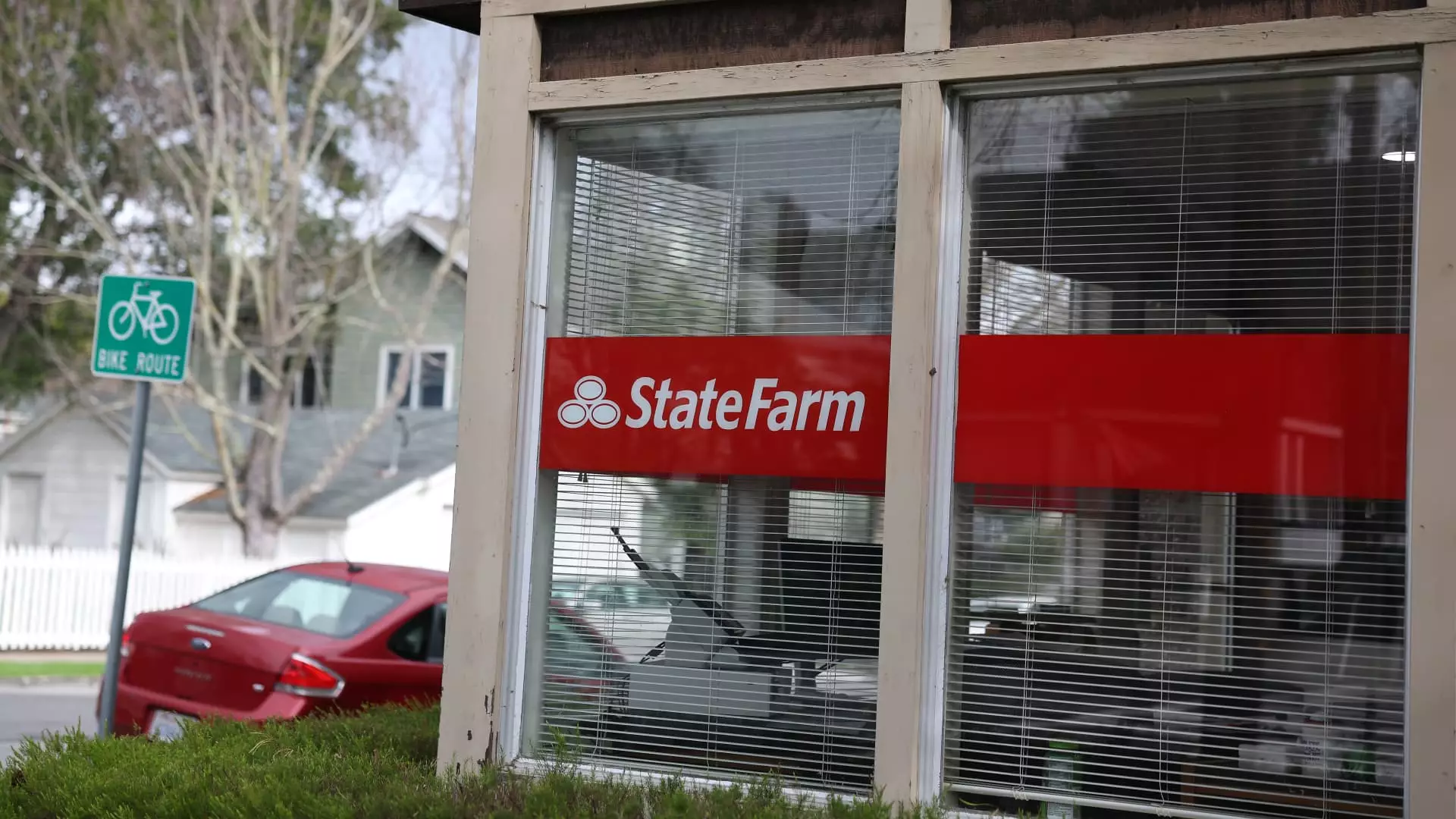State Farm, the largest property insurer in California, finds itself at a critical crossroads, as it petitions for a staggering rate hike amid an unprecedented financial crisis. The urgency of the matter cannot be overstated—the stakes for nearly 3 million Californians are incredibly high. This three-day hearing unfolding in Oakland is not just a routine procedure; it could firmly dictate the future of home insurance in a state that has been cruelly tested by nature’s fury, notably the catastrophic wildfires that ravaged Los Angeles recently.
The company claims that it requires additional funding to bolster its capital and stave off a looming disaster. Yet, as discussions unfold, it’s evident that the ramifications of this request extend far beyond corporate balance sheets—they touch the lives of everyday Californians who could find themselves financially adrift in the aftermath of an insurance market on the verge of collapse.
The Damages: A Grievous Crisis Orchestrated by Nature
The figures tell a grim story. The Los Angeles wildfires ignited in January inflicted damages estimated between $250 billion and $275 billion, marking it as the most expensive natural disaster recorded. This staggering financial toll reveals the profound vulnerability of California’s built environment, which faces escalating threats from climate change-induced disasters. Considering that State Farm holds approximately 20% of the homeowner’s market with its almost 3 million policies, it‘s industrial influence casts a long shadow over the insurance landscape.
In addition to the immediate losses, which tally over $2.75 billion from claims associated with these infernos, the longer-term economic implications loom large on the horizon. As losses mount, the unfortunate reality is that many everyday people could find themselves abandoned in the turbulent waters of a malfunctioning insurance system—an outcome that is unacceptable in a state with such a wealth of resources.
State Farm’s Position: Navigating Through Turbulent Waters
State Farm’s current plea focuses on an emergency request to raise rates—initially seeking a 22% increase, which has been later adjusted to a 17% hike for homeowners. On top of that, they’re tabling requests for an even steeper combined increase of 38% for rental dwelling policies and 15% for renters. The insurer has brought forth an interesting proposition: if these hikes are approved, it will seek an additional $400 million from its parent company to strengthen its reserves. This action could be seen as progressive, yet it also raises eyebrows as it reflects a desperate maneuver rather than sound fiscal management.
The harsh reality, however, is that the broader insurance market in California is buckling due to consistent losses, arising from both the frequent and intense natural disasters that have become a hallmark of the region. With State Farm ceasing new homeowners’ policies last May and dropping 72,000 existing policies citing financial risks, its future in the state looks as bleak as many wild landscapes turned to ashes.
The Regulatory Response: A Balancing Act
On the regulatory front, Insurance Commissioner Ricardo Lara finds himself under intense scrutiny—being an elected official, the stakes are particularly high. Critics from Consumer Watchdog argue the rate hike request lacks a solid legal foundation—pointing out inconsistencies in the request’s initial figures as indicative of a company straining to justify its need for more money without transparent accountability. They hit a nerve; after all, many Californians have been worn thin by rising costs and dwindling options.
Yet, it’s also crucial to acknowledge that the prevailing regulatory framework must evolve to address the crisis at hand. The Sustainable Insurance Strategy proposed by the state is an attempt to bring coherence to rate-setting, but whether it will yield meaningful change remains to be seen. Consumer advocacy groups argue for stricter scrutiny of rate increase requests, hoping to hold insurers accountable while pushing for greater consumer protection.
Future Predictions: What Lies Ahead for California’s Home Insurance Market?
As State Farm battles it out in court, the warning from attorney Nikki McKennedy—comparing the dire situation to that of the Titanic—resonates deeply. If the iceberg is not avoided, millions of policyholders could find themselves without lifeboats in these uncharted waters. The predictions surrounding the crisis underscore the need for citizens, regulators, and insurers to come together—not just to navigate this storm but to foster a more resilient insurance marketplace in California.
In the evolving conversations, it’s evident that simplistic solutions will not suffice. Policyholders deserve choices that don’t sacrifice their financial security for corporate aspirations. How State Farm’s appeal unfolds may shape the trajectory not only for the company but also for the millions of Californians reliant on a sustainable and fair insurance ecosystem.

